

Nestled on the southern coast of France, Montpellier is a city steeped in scholarly tradition and youthful energy, attributed mainly to its status as a university town. Home to one of the oldest universities in the world, the University of Montpellier, the city vibrates with intellectual fervor and a dynamic cultural scene. This blend of old-world academia and contemporary flair makes Montpellier a unique and intriguing destination.
Montpellier’s architecture is a delightful mix of medieval charm and modern sophistication, offering a visual journey through its rich historical layers and contemporary flourishes. The city’s historical center, known as the Ecusson, is the beating heart of Montpellier’s architectural heritage. Here, narrow cobblestone streets are lined with elegant mansions from the 17th and 18th centuries, such as the Hôtel des Trésoriers de France, which stands as a testament to the city’s wealthy past with its ornate façade and grand courtyards. These historical structures echo the grandeur of Montpellier’s days as a major trading hub in the Languedoc region, with each mansion telling stories of the affluent families who once resided there.
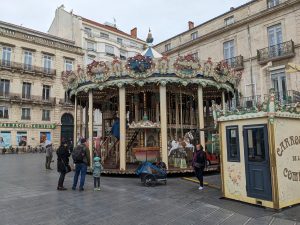

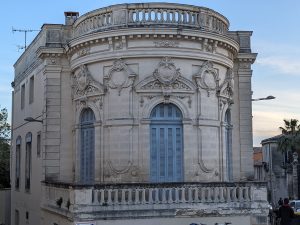
A short walk from the bustling medieval core leads to the Antigone district, a striking example of 20th-century urban planning and architecture. Designed by the renowned Catalan architect Ricardo Bofill in the late 1970s, this area is a modern counterpoint to the old town’s winding alleys and historic charm. The district features a grand, linear promenade surrounded by monumental buildings inspired by neoclassical designs but executed with modern materials and techniques. The result is a harmonious blend of past and present, where classical Greek and Roman influences meet contemporary aesthetics. The district is not only a residential and commercial hub but also a social space where locals gather, reflecting the city’s community-focused ethos.
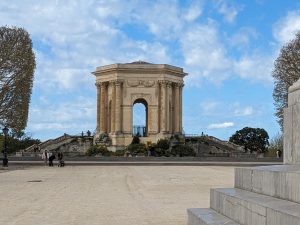
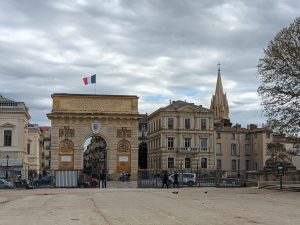
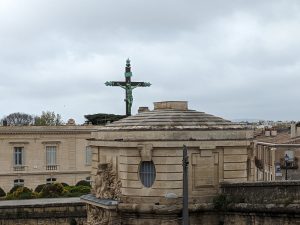
These architectural contrasts between the ancient and the modern make Montpellier a unique urban tapestry. Each district offers its own distinct atmosphere and aesthetic, contributing to the overall character of the city. This blend of architectural styles not only enriches the visual experience of visitors and residents alike but also symbolizes Montpellier’s evolution as a city that respects its past while boldly marching towards the future.
Culturally, Montpellier is a hub of artistic and theatrical activities, hosting numerous festivals and events that transform the city into a lively stage for both performers and spectators. The Fabre Museum is one of the key highlights, with an extensive collection of European art that attracts art enthusiasts from around the world.
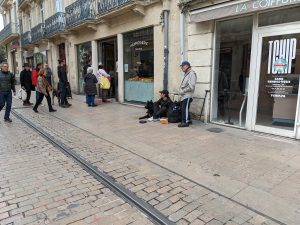
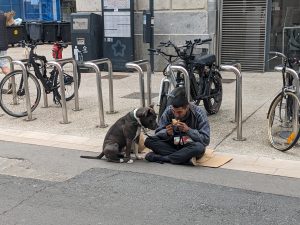
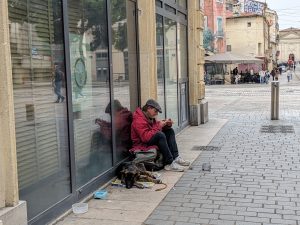
While Montpellier’s vibrancy is undeniable, the presence of numerous homeless individuals and their dogs along the major streets, particularly during busy times like Easter, can pose a challenge. The city’s festive occasions and everyday hustle invite diverse street scenes, including those less fortunate. As visitors and residents navigate the narrow, historic alleyways, they often encounter this aspect of urban life, which, while a reality in many cities, can impact the overall atmosphere.
The occasional tensions among the dogs, often accompanying their owners, can lead to moments of discomfort. Though not frequent, these incidents can interrupt the otherwise pleasant ambiance of strolling through Montpellier’s lively streets. Pedestrians may find themselves navigating the physical space and these brief, unsettling interruptions. While such experiences are part of many urban landscapes, they remind visitors of the complex social dynamics that exist within a city known for its beauty and cultural richness.
As we conclude our visit to Montpellier, we carry with us the beauty and knowledge it offers and the experiences from other cities like Sevilla, Girona, Carcassonne, and Toulouse. Throughout this trip, sharing LingoHut with schools and interacting with local communities has enriched our journey immeasurably. With its unique charm and challenges, each city offered us new insights and opportunities to connect with people from various backgrounds, enhancing our mission of fostering communication and understanding across cultures.